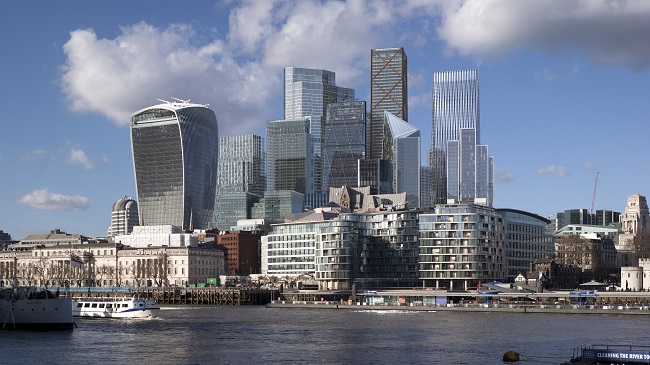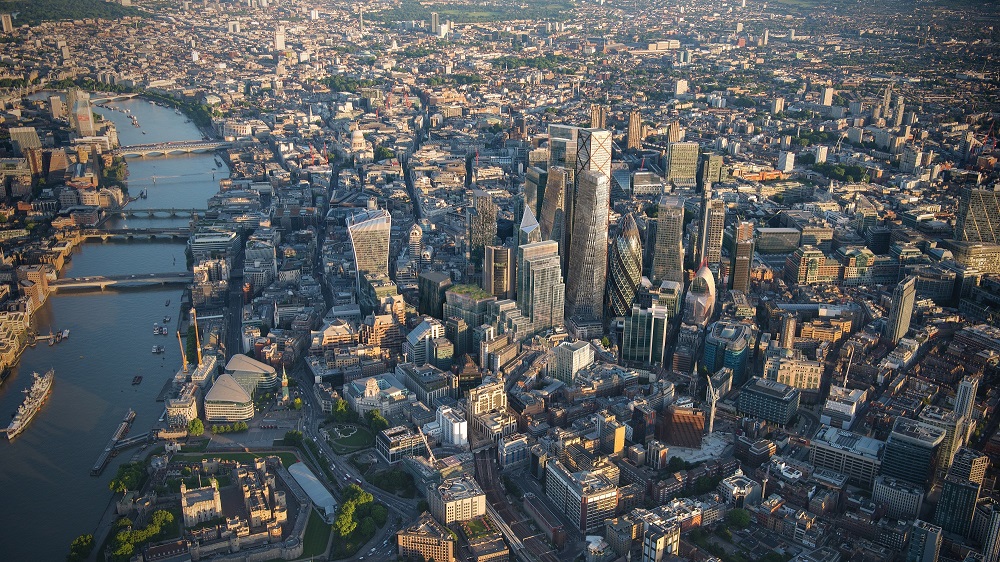City of London’s future skyline revealed

2026 View from City Hall looking north (Credit - GMJ and City of London Corporation)
The City of London Corporation has released updated images of how its City Cluster skyline will look in 2026, now including 100 Leadenhall Street.
The City Cluster is the area in the eastern corner of the Square Mile and is home to some of London’s most iconic skyscrapers.
A range of policies set to redefine the area and the wider City of London are currently out for consultation.
Key proposals in the 25-year Transport Strategy will see pedestrians prioritised, the implementation of a 15mph speed limit and deliveries reduced by 30 per cent through consolidation centres based outside of the City.
Britain’s first large scale Zero Emission Zone covering the City Cluster is also proposed.
Planners say the proposals “will enable the delivery of world-class public realm and make the City’s streets attractive to walk, cycle and spend time”.

2026 Aerial view looking west (Credit - GMJ and City of London Corporation)
The Local Plan identifies seven key areas of change where the City Corporation will be promoting sustainable growth. As one of the key areas of change, the City Cluster will grow to close the gap between the Walkie-Talkie and the rest of the cluster of towers.
The Plan’s development guidance will encourage more flexible and adaptable office floorspace, a policy requiring all new developments to include a greening element and new walking routes through tall buildings will support more animated ground floor spaces, and allow the public to benefit from more navigable and less congested network of City streets.
Chris Hayward, Chairman of the Planning and Transportation Committee at the City of London Corporation, said:“These images remind us that the City’s skyscrapers are some of the most recognisable structures in the UK. But great cities are not made from great buildings alone.
“The ambitious policy proposals outlined in the Transport Strategy and the Local Plan aim to resolve challenges at street level, and in the river, air and open spaces, as well as ensuring that City buildings and infrastructure are more robust than ever.
“These plans will play a central part in shaping the future of the City of London therefore it is vital that we hear from the local residents, workers and key stakeholders that will be impacted.”
The Transport Strategy consultation closes on 13 January 2019 with the last drop-in session taking place with City Corporation Transport officers at Guildhall on Wednesday 9 January. The final version of the Transport Strategy is due to be published in spring 2019.
The Local Plan is open for consultation until 28 February 2019, with drop-in sessions arranged throughout January and February. Visit the website for further details.
| Developments to be constructed by 2026 | Height (m) | Status | |||
| 22 Bishopsgate | 294.94 (62 storeys) | Under Construction | |||
| 52 Lime Street (the Scalpel) | 206 (36 storeys) | Under Construction | |||
| 100 Bishopsgate | 181 (37 storeys) | Under Construction | |||
| 6-8 Bishopsgate/150 Leadenhall Street | 185 (50 storeys) | Under Construction | |||
| 70 St Mary Axe | 164.3 (21 storeys) | Under Construction | |||
| 150 Bishopsgate | 150.92 (41 storeys) | Under Construction | |||
| 80 Fenchurch Street | 78 (14 storeys) | Under Construction | |||
| 1 Undershaft – the tallest in the Eastern Cluster* | 304.6 (73 storeys) | Consented, Not Commenced – still subject to S106 Approval | |||
| 2-3 Finsbury Avenue (Broadgate) north of the Eastern Cluster | 168.4 (32 storeys) | Consented, Not Commenced – still subject to S106 Approval | |||
| 100 Leadenhall Street | 263.4 (56 storeys) | Consented, Not Commenced | |||
| 40 Leadenhall Street | 170 (34 storeys) | Consented, Not Commenced | |||
| 130 Fenchurch Street | 105 (17 storeys) | Consented, Not Commenced | |||
| 1 Leadenhall Street (corner of Leadenhall Market) | 182.7 (36 storeys) | Consented, Not Commenced | |||
| *120 Fenchurch Street | 85 (15 storeys) | *Completed since last update |






